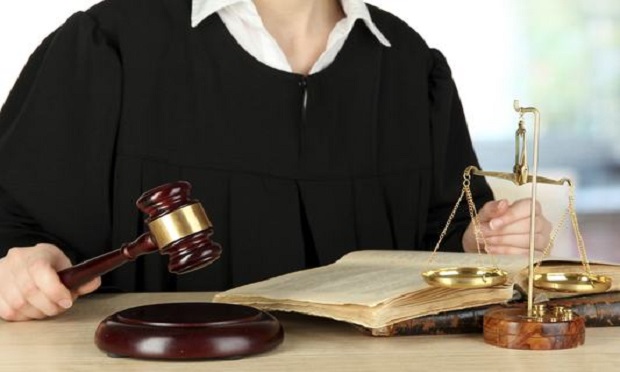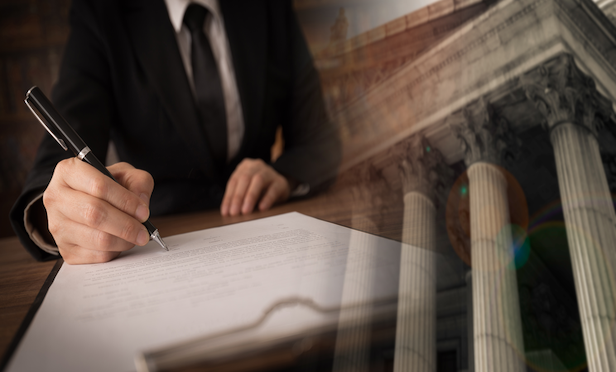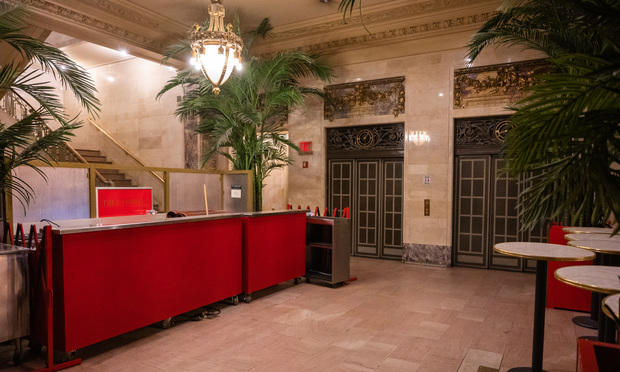 Medical Examiner personnel and construction workers are seen at the site of a makeshift morgue being built in New York, Wednesday, March 25, 2020. (AP Photo/Mary Altaffer)
Medical Examiner personnel and construction workers are seen at the site of a makeshift morgue being built in New York, Wednesday, March 25, 2020. (AP Photo/Mary Altaffer)
Many of our construction clients (and insurance carriers) have asked whether they might face liability if an employee contracts the coronavirus (COVID-19) at a time when he or she is working at a jobsite in the Tri-State area. As the pandemic continues to grow in intensity, we fully expect plaintiffs to try to make out a Labor Law 200 or 241(6) violation against owners and general contractors should a worker contract coronavirus and develop significant complications resulting in a prolonged period of unemployment.
According to various sources, more than 80% of coronavirus cases are mild and should result in full recovery and return to work within a short period of time after contracting the virus. However, owners and general contractors could face liability if a laborer contracts the virus from a jobsite where the contractor knew or should have known that an employee at the site was showing symptoms of exposure to the virus. Of course, a significant risk of liability exposure would only apply if the worker was in the minority of those affected and exhibited severe symptoms.
Recommended For You
At the outset, a laborer would have to make a showing that they contracted the virus at the jobsite. Absent a change in the law (similar to asbestos cases), this could present an obstacle to widespread recovery for coronavirus related claims.
Breaking down the law
Assuming a laborer was able to prove they contracted the virus at work, we would expect plaintiffs to argue owners and general contractors are liable pursuant to Labor Law §§241(6) and 200. (Labor Law 240 would obviously not apply as the injury was not caused by a falling object and does not involve a falling worker.)
As to Labor Law 241(6), we expect plaintiffs to cite to §23-1.7(g) or §12-1.4 claiming owners and general contractors violated the Industrial Code of the State of New York with respect to exposure to contaminants.
Section 23-1.7 Protection from General Hazards (g) Air-Contaminated or Oxygen Deficient Work Areas provides: The atmosphere of any unventilated confined area including but not limited to a sewer, pit, tank or chimney where dangerous air contaminants may be present or where there may not be sufficient oxygen to support life shall be tested by the employer, his authorized agent or by a designated person before any person is suffered or permitted to work in such area. Such testing shall be in accordance with the provisions of Industrial Code Part (rule) 12 relating to the "Control of Air Contaminants" and such areas shall be subject to the other pertinent provisions of Industrial Code Part (rule) 12 and of Industrial Code Part (rule) 18 relating to "Exhaust Systems."
Based on a plain reading of the provision, it requires testing of an "unventilated confined area" as opposed to having the employer walk around testing individuals for coronavirus (if that were even possible!).
Section 12-1.4 Prevention of air contamination applies to "operations or processes which produce air contaminants …" As such, we do not believe it would apply, though we suspect some plaintiffs would point to §(b)(3) of this provision which states, "No employer shall suffer or permit an employee to work in a room in which there exist dangerous air contaminants in a work atmosphere."
Ultimately, we do not believe plaintiffs would be able to make out a LL241(6) claim.
The real issue is Labor Law 200 or common-law negligence claims. Under Labor Law 200 or common-law negligence claims, plaintiffs would have to show the owners or general contractor (1) directed or controlled the injury-producing work, or (2) had notice of an unsafe condition. Does a New York City directive to avoid all non-essential work due to the coronavirus qualify as "notice of an unsafe condition?" We would think not.
Past case examples
Unsurprisingly, there is no case law directly on point. The only somewhat analogous cases we found were claims of employees infected with HIV, and one case dealing with the swine flu, but that case involved governmental response (as opposed to a private entity).
In addition, we expect plaintiffs will try to analogize this situation to the post 9/11 asbestos remediation work in New York City. In Kagen v. BFT One Liberty Plaza, plaintiff was involved in post 9/11 cleaning of a building. The court found the dust and debris that accumulated in the office building in which plaintiff performed fine cleaning resulted not from any act or omission of defendants but from the terrorist attacks that caused the Twin Towers of the World Trade Center to collapse. The fact that representatives of defendants gave general instructions as to what needed to be done and performed monitoring and oversight of the timing and quality of the work was insufficient to support a Labor Law 200 or common law negligence claim. As to the issue of notice, the defendants' duty to reasonably inspect the air quality in the building was satisfied by their consultant's report that the samples analyzed for airborne toxins were all within acceptable levels.
As an aside, the court addressed the two Industrial Code provisions discussed above and found §23-1.7 inapplicable since it expressly applied to work in any "unventilated confined area" "where dangerous air contaminants may be present or where there may not be sufficient oxygen to support life," and the provisions of §12, standing alone, were not sufficiently specific to support a cause of action under Labor Law 241(6).
In sum, we would recommend our clients abide by all city, state and federal directives regarding the coronavirus including but not limited to guidelines with respect to social distance, handwashing and other related recommendations. If work is to continue at a particular jobsite, we recommend repeated daily instructions that anyone who feels the slightest bit unwell should immediately go home and contractors should avoid meeting in groups for the time being. Taking these steps should help with employee health and mitigate the potential for exposure to Labor Law claims.
Cheryl Fuchs ([email protected]) and Doug Rosenzweig ([email protected]) founded Fuchs Rosenzweig PLLC in January 2019 to service construction, demolition and scaffolding companies who are defending claims brought pursuant to operation of the New York State Labor Law. The views expressed here are the authors' own.







